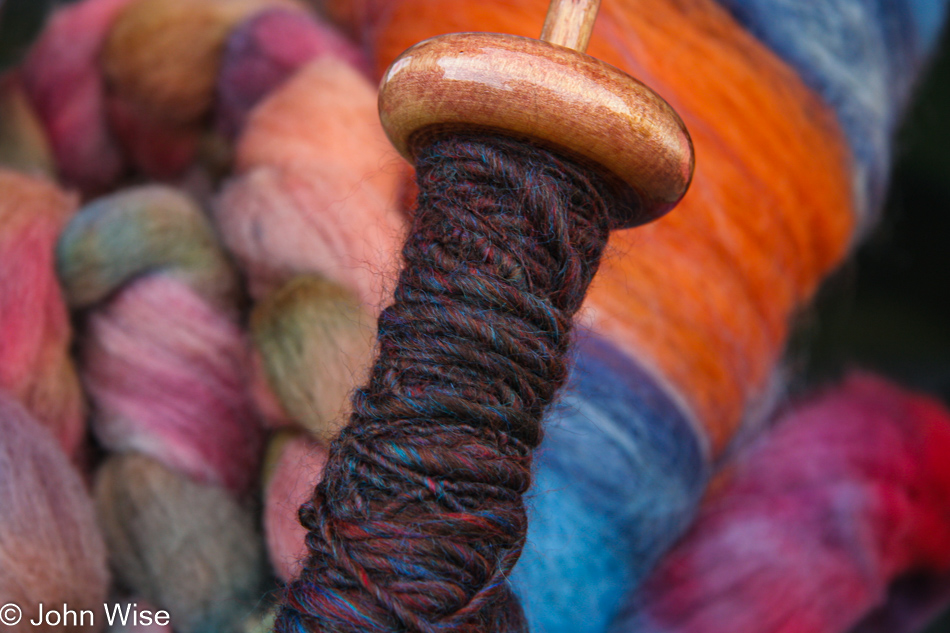
Important Note: This is another series of blog posts where, when the events described within were transpiring, we did not take notes, and so here I am, thousands of years later, attempting to give context to images that, while able to trigger fragments of memories, act as an incomplete picture of the story. Sure enough, we should have been tending to these things without fail, but little did we understand the value of revisiting milestones later in life. And so, without that proverbial further ado, here we go into a murky past.
It’s uneven and a bit lumpy, but Caroline has succeeded in spinning some primitive yarn. A drop spindle is a great tool to understand how the fibers come together. A spinning wheel requires a lot more coordination between the hands that hold the fiber and the feet that control the speed of the whole operation. Let me fast-forward here a bit as after we returned to Arizona, Caroline agreed that it would be interesting enough to buy her own wheel, but like all new hobbies, she felt like a klutz because she couldn’t find her rhythm. Guilt for spending a lot of money on something she might not be able to master was dealing her a negative hand. I believe it was towards the end of the year in 2007, when I was collecting a bunch of birthday gifts for her 40th and was frequently visiting a yarn store in Mesa, that I learned that there were people who could tutor her about using her new Fricke spinning wheel. It took this little nudge for her to find her rhythm with the wheel, which led to us visiting Yarn School again in 2008.
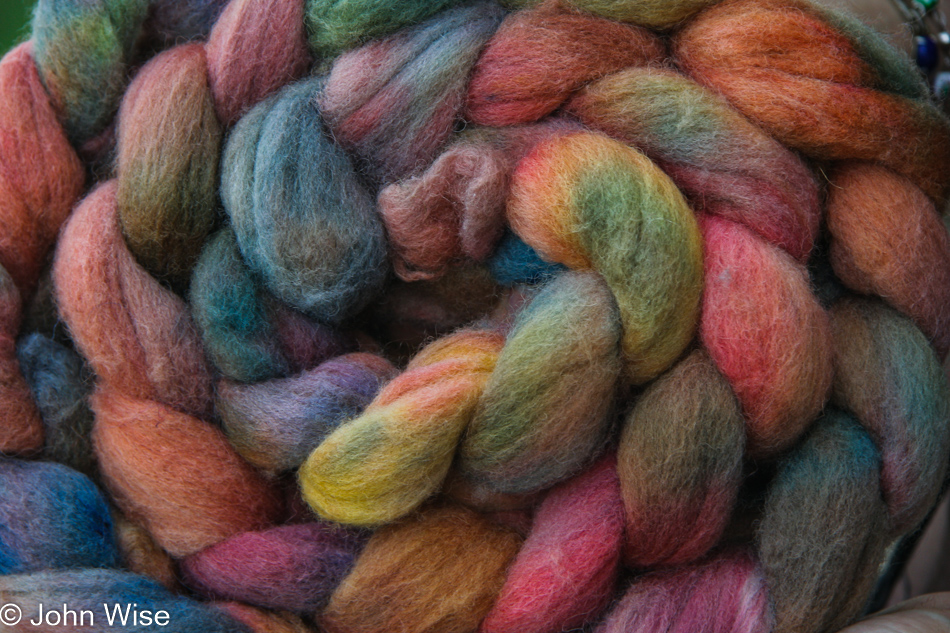
While my memory is likely rusty, Caroline’s is certainly finely tuned, and it will be up to her to confirm or deny if I’m correct in stating that I believe this is the result of the roving she dyed the day before.
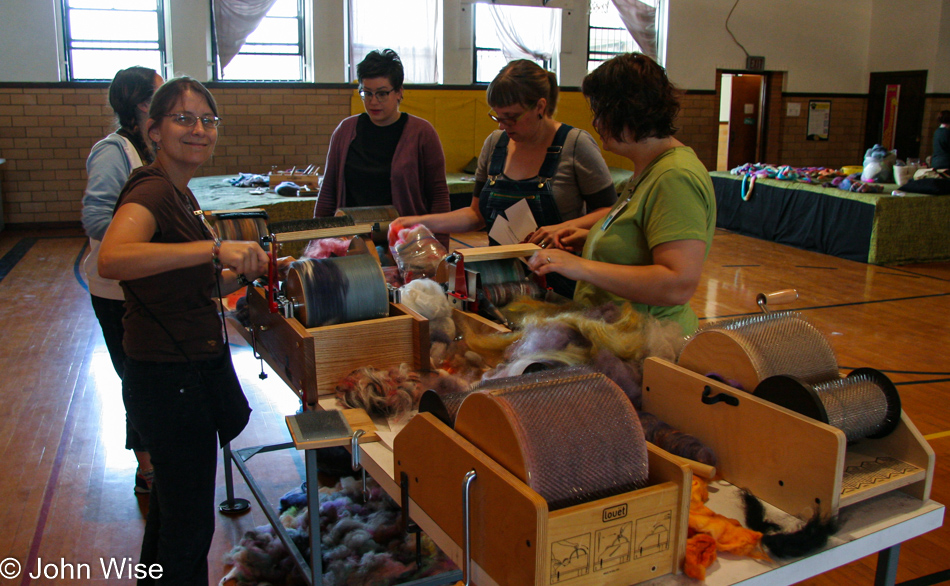
Carding is the process of aligning fibers which is a requirement allowing them to be spun. The device Caroline is using is known as a drum carder, and it wouldn’t be long before we had one at home. It turns out that combs can also be used and for spinning, one needn’t buy a pricey wheel. A “drop spindle” can also get the job done, but this isn’t a class in how to make yarn just a recounting of those days we were both learning a lot more about this craft than we’d previously known.

So I’m not just looming over Caroline (did you pick up on my pun?), I took a drive out in yet another direction, this time taking me to Burlingame, Kansas.
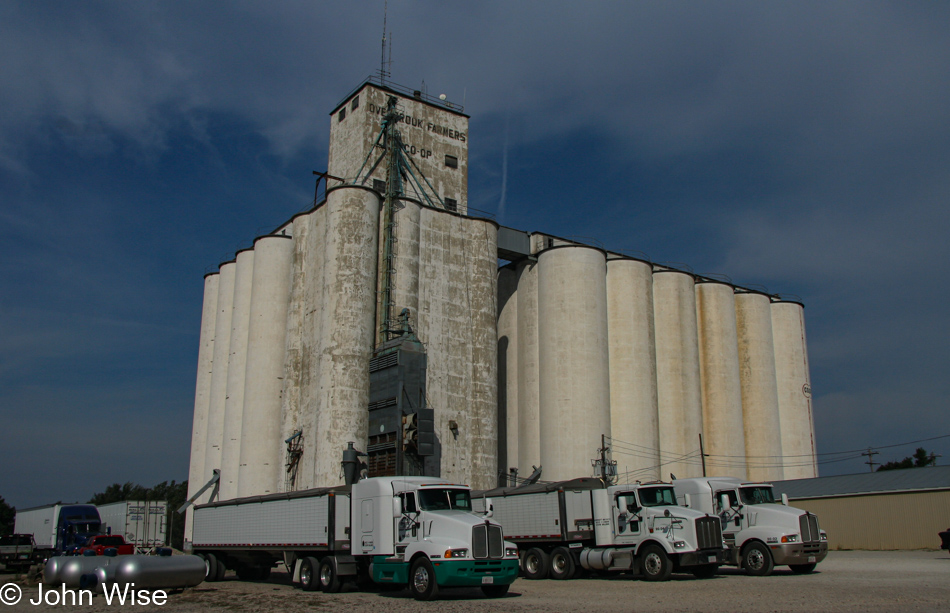
From the dearth of photos, I guess I’d have to admit I wasn’t all that inspired out here today. I had to include this grain silo as, for some reason or other, I have a soft spot that draws me to these superstructures dispersed across the American landscape.
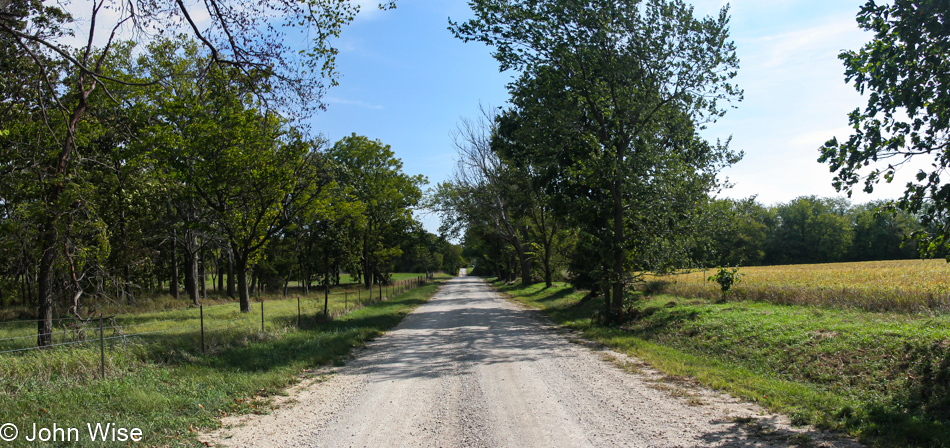
No old cars here, no weed, no lake, river, pond, or sign of a tornado.

Back at school, I spy this nerdy girl looking all cute and invite her out for some tortoise racing. Caroline was ready for a break after struggling all day with her transition from spindle to wheel.
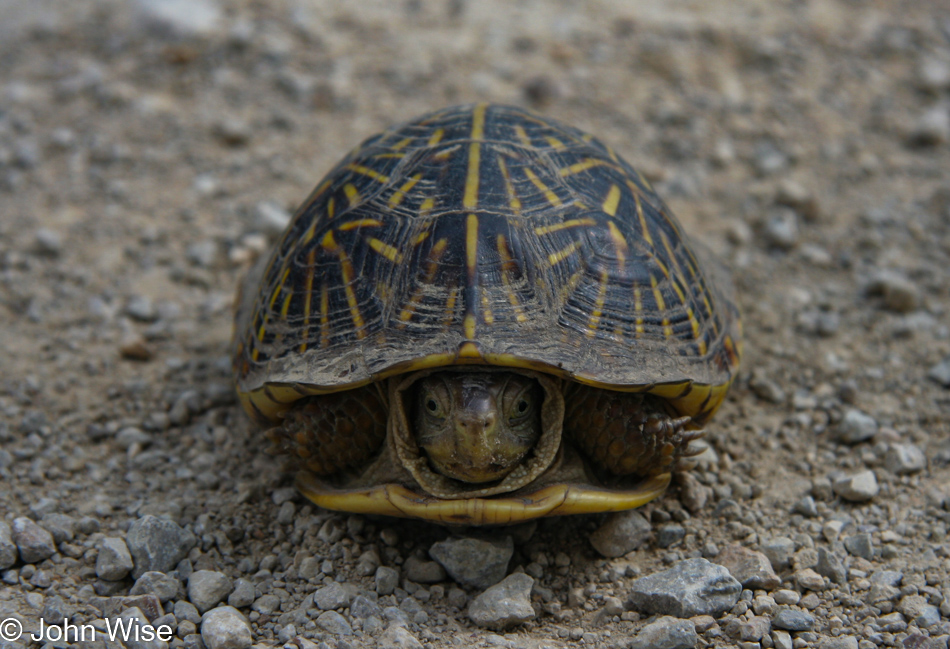
But my tortoise was shy, so I asked if she’d like to ride my goat.
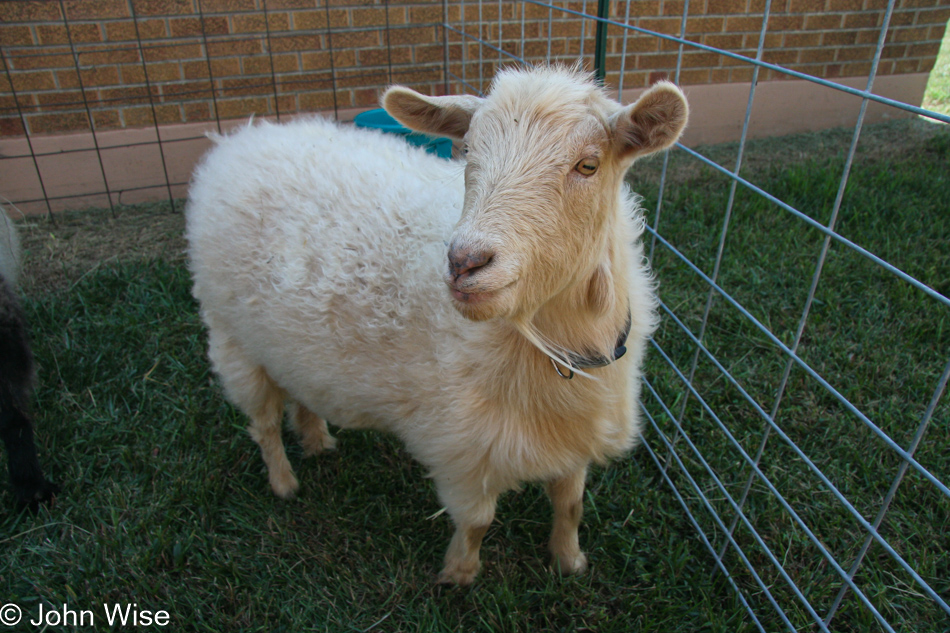
She agreed but the goat resisted, uttering in goat-ese that its legs were too short.
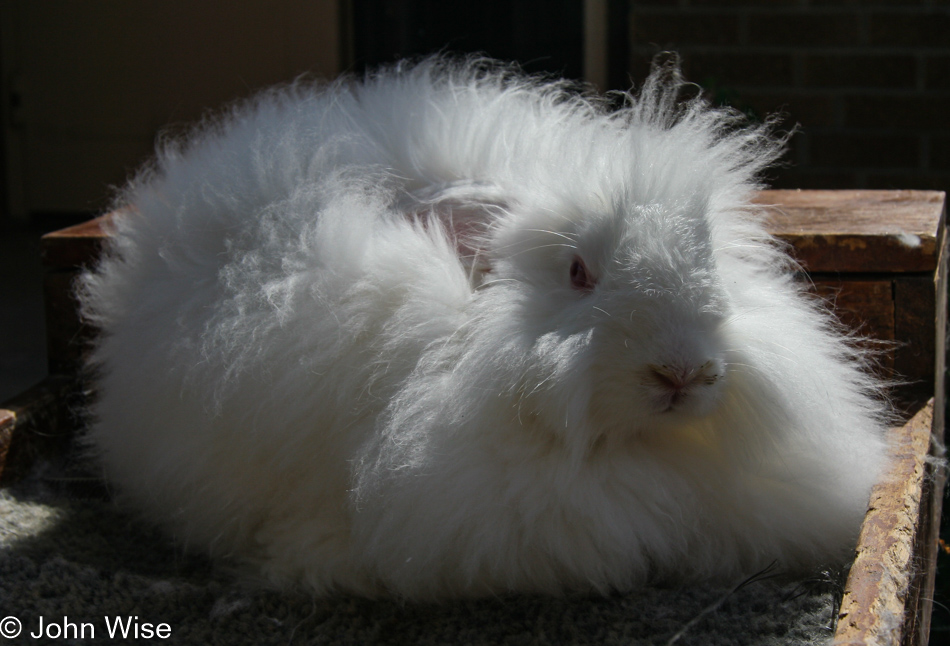
Fluffy bunny insisted there weren’t wings hidden deep in its fur and so our fantasy of flying away wasn’t going to work.
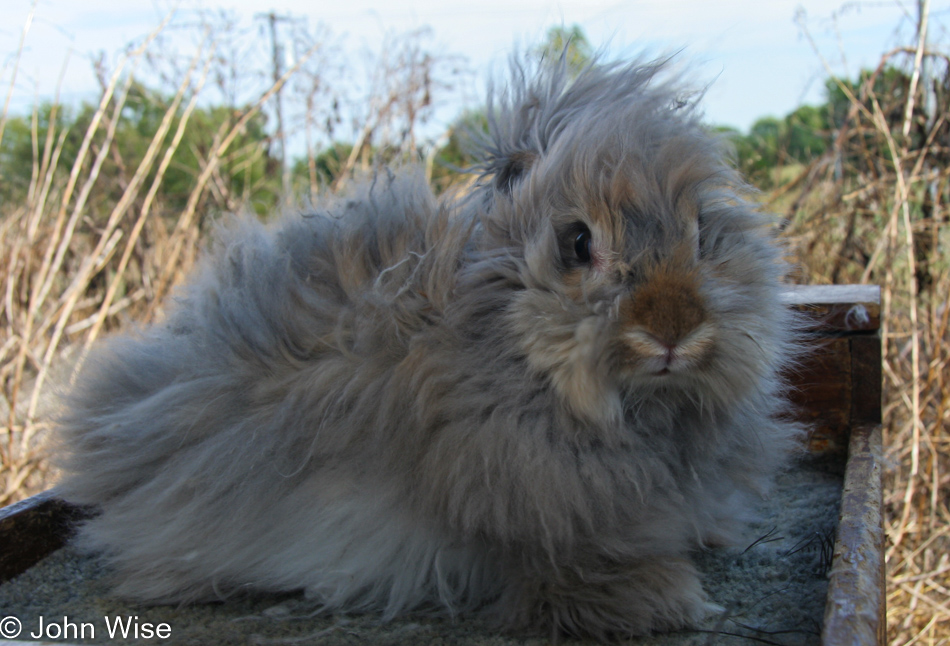
Then I saw this gorgeous bunny and nearly lost sight of the nerdy girl because who wouldn’t fall in love with this bundle of cuddles? Maybe “love” is too strong, as I’m not one to insinuate some kind of bestial attraction, so I’ll change this to “enchanted.” The Pygora goats and Angora bunnies were brought to the Yarn School students by local breeders. They patiently answered everyone’s questions about these somewhat unusual fiber animals.
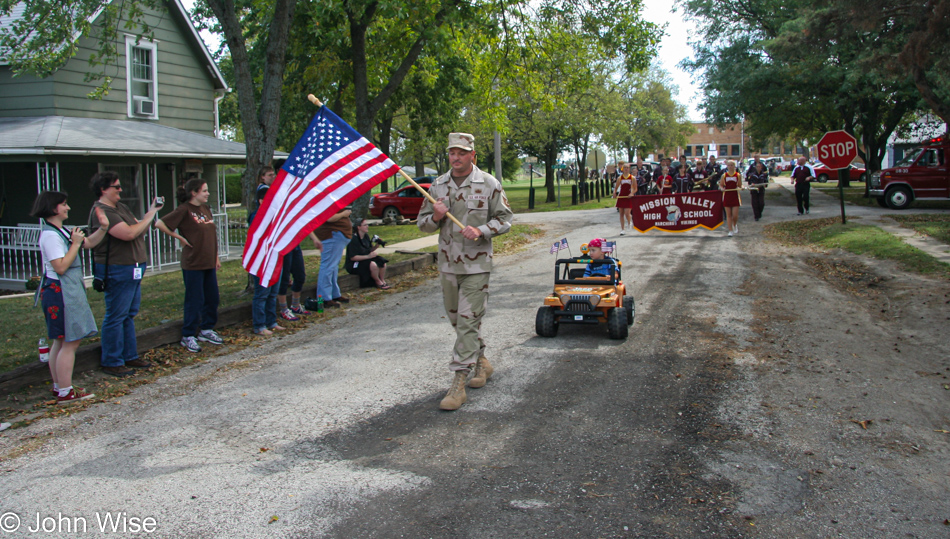
It’s Saturday, a week after the beginning of fall with just a month until Halloween, and the town of Harveyville is welcoming the change of seasons with a parade.

The local National Guard, fire department, marching band, a wide cast of characters, and, of course, these Cub Scouts made up as pirates ready for some early trick-or-treating were all streaming by as the participants of Yarn School cheered them on.
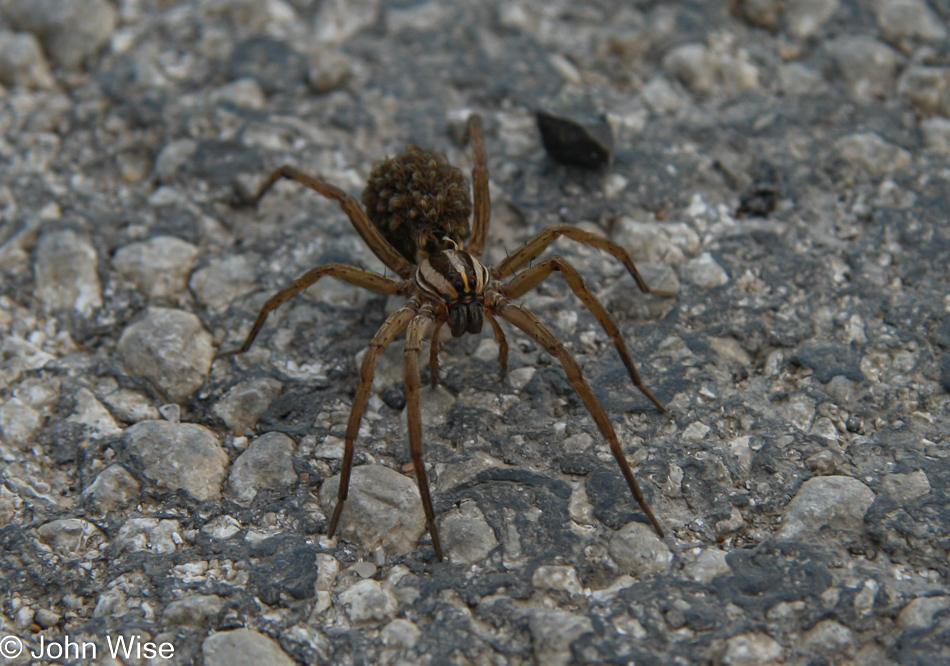
I can’t say this spider with its children riding on its backside was intentionally part of the parade, but there it was.
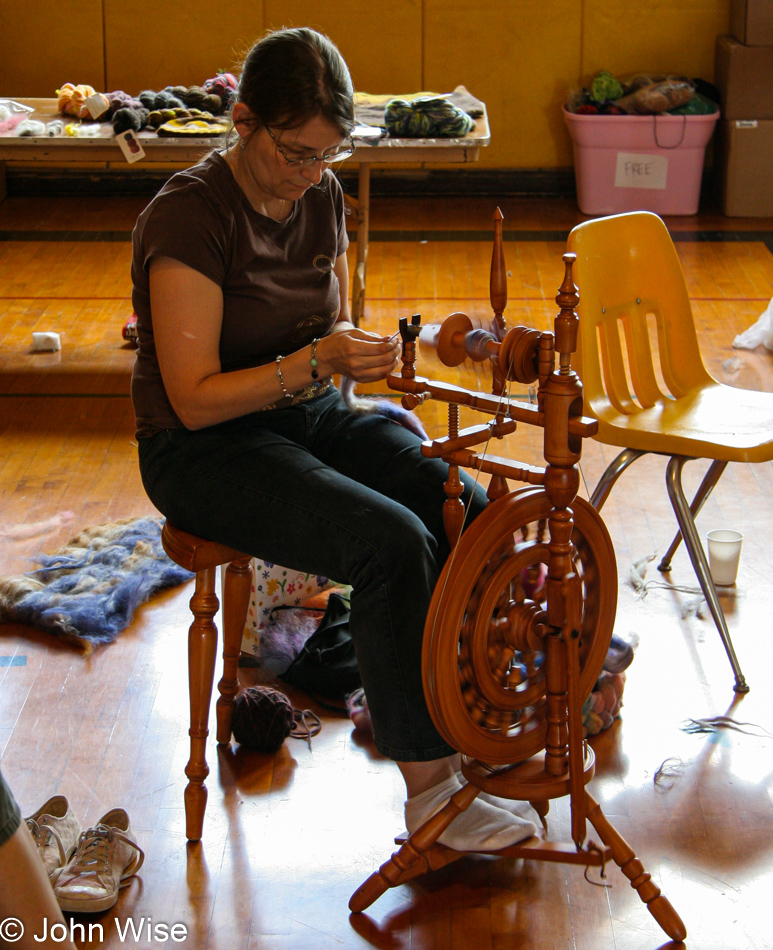
With a number of spinning wheels on hand, the women of Yarn School were able to try them all if they had the interest. Caroline is finally getting the hang of spinning on a wheel and experimenting with different models to see if one is “easier” than others. This particular one is a Mazurka made by Kromski.
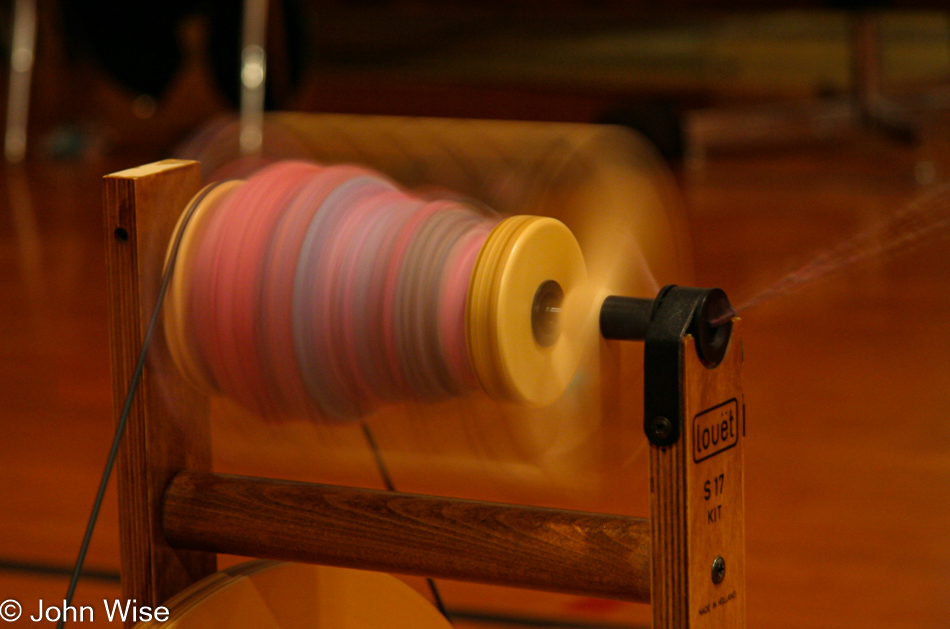
I’d bet a dollar everyone is interested in what accumulating yarn looks like as it wraps around a bobbin; well, I am.
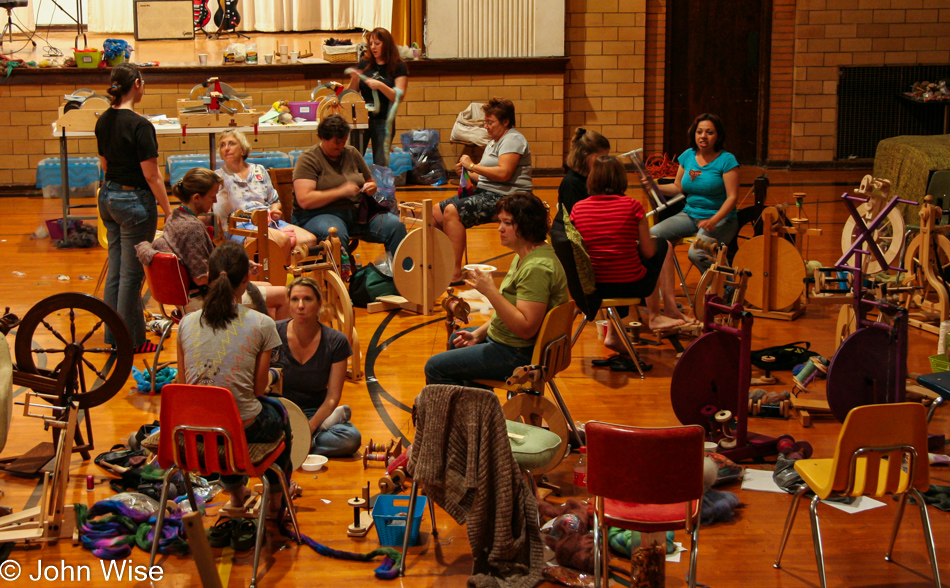
This is the last night of Yarn School, and there’s no rush to head off to sleep as, by now, the camaraderie and sharing have led to budding friendships, and so the ladies will be out here burning the midnight oil as they try to extend the experience forever.